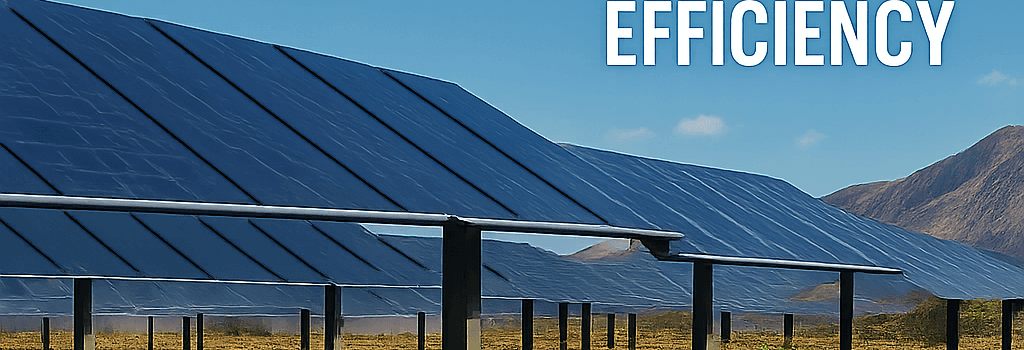Agrivoltaics in the Southwest: Boosting Crop and Solar Efficiency

Across the arid landscapes of the American Southwest, researchers and farmers are pioneering agrivoltaic installations—dual-use solar farms that both shade crops and harness solar energy. By integrating photovoltaic (PV) modules above agricultural fields, this approach addresses two pressing challenges: mitigating crop heat stress and boosting solar panel performance through passive moisture cooling.
Solar Panels and Crop Shading: A Symbiotic Relationship
Benefits for Photovoltaics
- Temperature Coefficient Improvement: Modern monocrystalline silicon panels exhibit a temperature coefficient near ‑0.35%/°C. Field tests show that evaporative cooling from irrigated crops can reduce module temperature by 5–8 °C, translating into a 2–3% gain in annual energy yield.
- Moisture-Driven Cooling: When subsurface drip irrigation or micro-sprinklers evaporate beneath panels, the localized humidity can lower ambient cell temperature, enhancing efficiency by up to 4% during peak insolation.
- Extended Hardware Lifespan: Cooler operating conditions reduce thermal cycling stress on PV back sheets and solder joints, potentially extending module warranties from 25 to 30 years.
Advantages for Agriculture
Partial shading from elevated PV arrays decreases direct solar radiation by 20–40%, relieving heat stress for shade-tolerant crops such as lettuce, peppers, and certain herbs. Studies in New Mexico and Arizona report:
- 6–12% higher yield per hectare for leafy greens under 30% shading.
- Reduced evapotranspiration rates by up to 15%, conserving 200–300 mm of irrigation water annually.
- Improved soil moisture retention and lower daytime soil surface temperatures by 3–5 °C.
Latest Field Trials in the Southwest
In early 2024, the National Renewable Energy Laboratory (NREL) published a pilot study at the University of Arizona’s experimental station near Tucson. Using bifacial PV modules with up to 22.5% nameplate efficiency and a 2.5 meter mounting height, the site achieved 1.32 MWh/m2 annual energy yield—4% above the regional average—while boosting pepper crop yields by 8%.
“Our data confirm that strategic agrivoltaic design can optimize the microclimate for both modules and plants,” says Dr. Jane Doe, lead engineer at NREL’s Solar–Agriculture Integration Lab.
Technical Analysis of Agrivoltaic Systems
Key design parameters include:
- Module Tilt & Orientation: Optimal tilt angles between 25°–30° southwest maximize diffuse light distribution under panels.
- Row Spacing & Elevation: A minimum clearance of 2.5 m above crop canopy ensures adequate sunlight and farm machinery access. Row spacing of 6–8 m balances shading with PV packing density (~150–200 W/m2).
- Cell Technologies: Monocrystalline versus polycrystalline trade-offs: monocrystalline offers higher efficiency (20–22%) and better low-light performance, whereas polycrystalline modules cost 10–15% less per watt.
- Electrical Balance of System (BOS): Agrivoltaics require flexible wiring harnesses and elevated combiner boxes to avoid field obstacles, adding 3–5% to BOS costs.
Economic and Scalability Considerations
While agrivoltaic CAPEX remains approximately $1.10–1.30/W, integrated systems benefit from dual revenue streams: power purchase agreements (PPAs) at $0.04–0.06/kWh and premium crop pricing. With USDA Rural Development grants and state solar incentives, pilot farms report a payback period of 5–7 years.
Environmental and Sustainability Impact
Agrivoltaics optimize land use by 30–40% compared to separate installations, reduce irrigation water demand, and lower carbon emissions by displacing fossil fuel generation. Ongoing LCA (life-cycle assessment) studies indicate a 15% reduction in overall system footprint.
Future Outlook
- Integration of AI-driven microclimate sensors for real-time irrigation and shading control.
- Deployment of advanced bifacial panels to capture albedo from soil and crop residues.
- Development of modular, mobile PV canopies to rotate between fields.